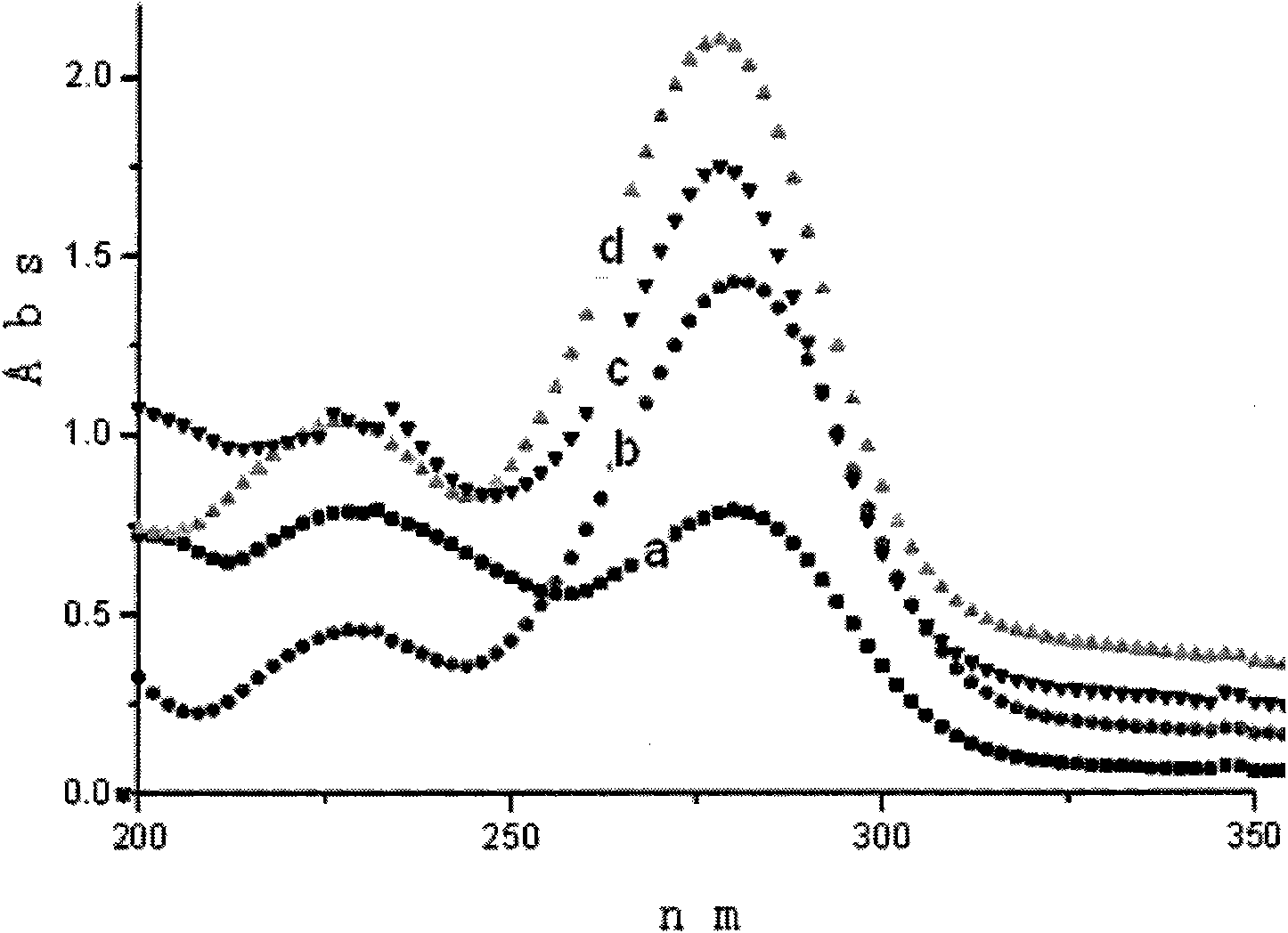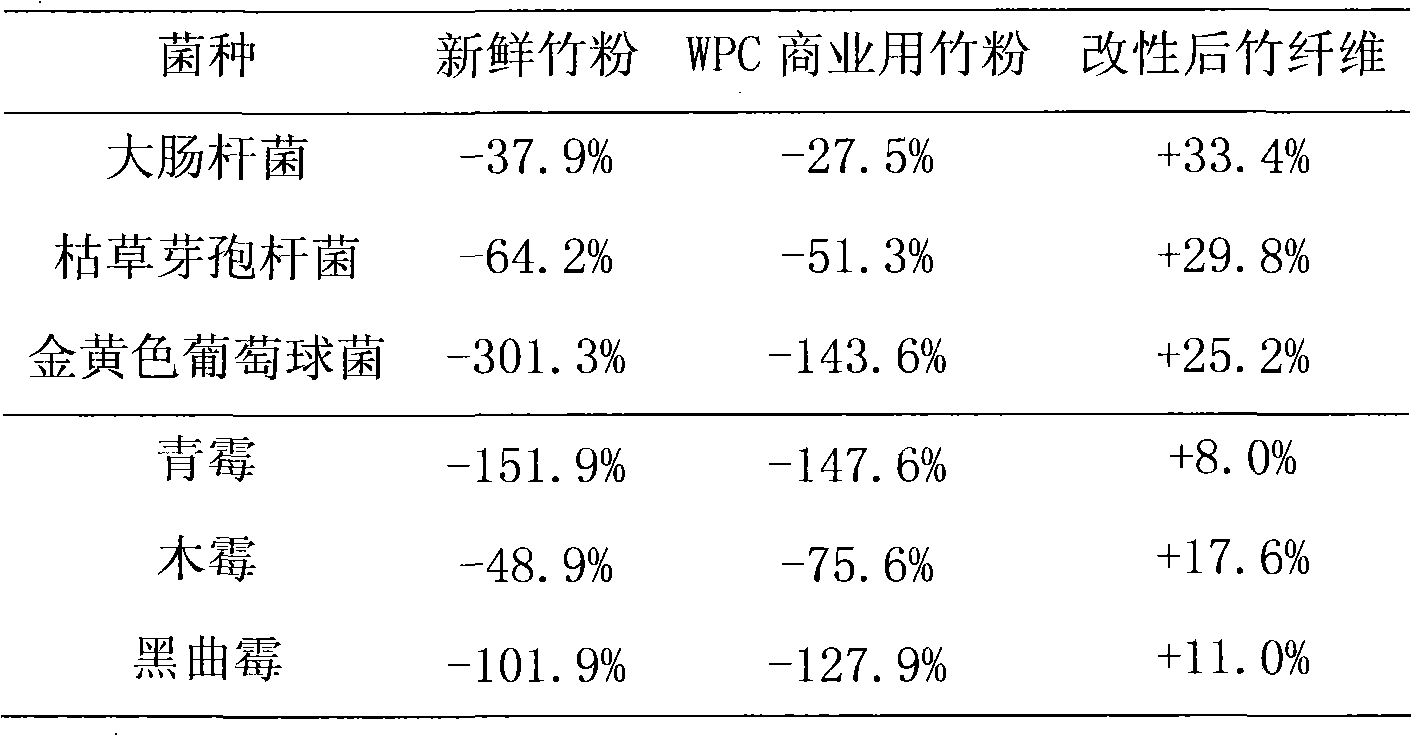Durable cellulose fiber and application thereof
A cellulose fiber and durability technology, applied in the field of polymer composite materials, can solve problems such as low density, fading and aging, and large aspect ratio
- Summary
- Abstract
- Description
- Claims
- Application Information
AI Technical Summary
Problems solved by technology
Method used
Image
Examples
Embodiment 1
[0036] Weigh 40g of microcrystalline cellulose, add 40g of tetrahydrofuran, first disperse at 40°C at high speed for 60min, add 16g of toluene diisocyanate under stirring condition, add 0.10g of catalyst dimethylethanolamine, heat up to 40°C and keep the temperature for 1.5h, Add 8 g of aminopropyltriethoxysilane dropwise, keep warm at 30°C for 1 hour and filter with suction, recycle the filtrate, wash the filtrate twice with acetone, and dry it in vacuum at 30°C for 4 hours to obtain modified cellulose fibers.
[0037] Weigh 10g of the above-mentioned modified cellulose fibers and crush them through a 20-mesh sieve, add 70g of polyethylene, 0.5g of maleic anhydride grafted polyethylene, and 0.5g of titanate coupling agent. After mixing evenly, use a twin-screw extruder to It is extruded and granulated at 140°C, and molded at a pressure of 5 MPa and a temperature of 150°C.
Embodiment 2
[0039] Weigh 40.0g of hemp cellulose fiber, add 360g of N,N dimethylformamide, stir at high speed for 10min, then add 4g of toluene diisocyanate, raise the temperature to 50°C and keep it warm for 0.5h, then add dropwise N-aminoethyl-3- 10.0 g of aminopropylmethyldimethoxysilane was incubated at 40°C for 2 hours and suction filtered, the filtrate was recycled, the filtrate was washed twice with tetrahydrofuran, and vacuum dried at 60°C for 4 hours to obtain modified cellulose fibers.
[0040] Weigh 70g of the above-mentioned modified cellulose fiber and crush it through a 100-mesh sieve, add 20g of polypropylene, 5.0g of polyethylene wax, 3.0g of maleic anhydride grafted polypropylene, and 1.0g of zinc stearate. The screw extruder extruded and pelletized at 210°C, and molded at a pressure of 5 MPa and a temperature of 190°C.
Embodiment 3
[0042]Weigh 40.0g of bamboo cellulose fiber, add 300g of tetrahydrofuran, first disperse at 40°C for 30min, then add 10.0g of isophorone diisocyanate, add 0.07g of catalyst tetramethylpropylenediamine, heat up to 60°C and keep warm for reaction After 2 hours, 12.0 g of amino-terminated polydimethyloxysiloxane with a molecular weight of 600 was added dropwise, and the reaction was carried out at 50°C for 0.5 hours. Next, vacuum-dry at 50°C for 4 hours to obtain modified cellulose fibers.
[0043] Weigh 65.0g of the above-mentioned modified cellulose fibers and crush them through a 40-mesh sieve, add 35.0g of waste plastic particles, 2.0g of maleic anhydride grafted polypropylene, 2.0g of polyethylene wax, and 1.0g of silane coupling agent K560, mix well Finally, use a twin-screw extruder to extrude and pelletize at 190°C, and extrude at a temperature of 170°C.
PUM
| Property | Measurement | Unit |
|---|---|---|
| thermal decomposition temperature | aaaaa | aaaaa |
| hydroxyl value | aaaaa | aaaaa |
| purity | aaaaa | aaaaa |
Abstract
Description
Claims
Application Information
 Login to View More
Login to View More - R&D
- Intellectual Property
- Life Sciences
- Materials
- Tech Scout
- Unparalleled Data Quality
- Higher Quality Content
- 60% Fewer Hallucinations
Browse by: Latest US Patents, China's latest patents, Technical Efficacy Thesaurus, Application Domain, Technology Topic, Popular Technical Reports.
© 2025 PatSnap. All rights reserved.Legal|Privacy policy|Modern Slavery Act Transparency Statement|Sitemap|About US| Contact US: help@patsnap.com


